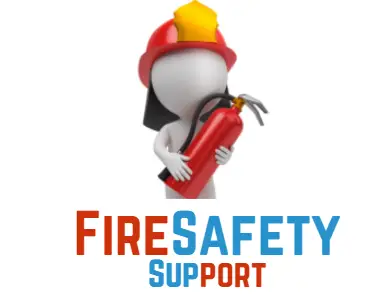Kerosene burns at the temperature between 362°F and 449°F (182°C and 239°C). It is also the burn temperature or the self-ignition point. Kerosene also has a flashpoint of about -45 degrees Fahrenheit. This is the lowest temperature at which the kerosene will ignite when exposed to a flame. Its flashpoint is even lower than that of gasoline which makes Kerosene more volatile in comparison.
If you want to find out more about the flammability of kerosene and how to avoid a kerosene-ignited fire then keep reading this article.
Is Kerosene Flammable?
Yes, kerosene is flammable. The flammability of kerosene depends on its grade. Regular kerosene is not as flammable as premium kerosene. Regular kerosene is designed for use in heaters and stoves, but it can also be used in lamps and lanterns.
Premium kerosene has a higher flash point than regular kerosene, meaning it won’t burn as easily or quickly as other fuel when exposed to an open flame or spark. It’s ideal for outdoor use, like heating grills or powering outdoor lights.
Is Kerosene More Flammable Than Gasoline?

No, kerosene is not more flammable than gasoline. While both kerosene and gasoline are flammable, kerosene is less likely to explode than gasoline.
The reason for this is that kerosene is denser than gasoline, which means it takes longer to evaporate. This gives kerosene more time to cool down as it heats up, so it doesn’t ignite as easily as gasoline would in the same situation.
What Happens When Kerosene Burns?
When kerosene burns in an open container (such as a lamp), it produces carbon dioxide and water vapor along with heat energy. The amount of carbon dioxide released depends on how much oxygen is present in the air surrounding the flame.
When there is plenty of oxygen available for combustion (as in an open flame), then most of the carbon dioxide produced comes from reactions with water molecules rather than from burning kerosene itself (which would produce carbon monoxide).
Suppose there isn’t enough oxygen available for complete combustion. In that case, some of the carbon monoxide will be produced instead of carbon dioxide, and this can lead to headaches or dizziness if exposed to high levels of CO over time.
Bonus: Check out how much fire insurance covers.
How To Put Out A Kerosene Fire?

Kerosene fires, while rare, can be quite dangerous due to the fuel’s flammable nature. Should such an incident occur, proper action is very crucial. Here’s what you need to know:
Immediate Measures:
Evacuate the Area: Your safety is paramount. Move yourself and anyone nearby away from the fire without delay.
Contact Emergency Services: Immediately call the emergency number for firefighters. They are equipped to handle kerosene fires safely and effectively.
Small Fire Extinguishment: If the fire is small and contained, and you have access to a Class B or ABC fire extinguisher (suitable for flammable liquids), you may attempt extinguishment. Aim the nozzle at the base of the flames and sweep back and forth until the fire is out. Remember, NEVER use water on a kerosene fire.
Smothering the Fire: In the absence of a fire extinguisher, you can smother a small fire by carefully covering it with sand or soil. This deprives the flames of oxygen, causing them to extinguish.
Always Remember:
Leave Large Fires: Do not attempt to fight a large or spreading kerosene fire. Evacuate the area immediately and let the professionals handle it.
Safe Storage: Always store kerosene in a cool, well-ventilated area away from heat sources, sparks, and open flames. Keep containers tightly sealed and out of reach of children and pets.
Minimize Spills: Be cautious when pouring or handling kerosene. Spills can ignite easily, so handle containers with care and clean up any spills promptly and safely.
By following these steps and implementing preventive measures, you can significantly reduce the risk of kerosene fires and ensure the safety of yourself and others.
Additional Resources:
Your local fire department can provide more information and training on fire safety and proper extinguisher use.
You should also check the National Fire Protection Association (NFPA).
How To Prevent A Kerosene Fire Outbreak?
Following are some of the methods on how you can prevent a kerosene fire outbreak.
- Make sure to keep the kerosene containers tightly closed unless you have to add fuel or clean them out.
- Don’t spill kerosene while you are using it. Even if you do, make sure to clean it up as soon as possible
- If you are using Kerosene with high temperatures or any source of ignition then do it in a closed system, and use explosion-proof electrical equipment
- Avoid open flames
- If a fire has been ignited then keep the drum or any other water container nearby and spray it over
By following these methods you can reduce the risk of kerosene fire outbreak.
Bonus: Find out if burning aluminum foil is toxic or not.
Conclusion
In conclusion, how hot kerosene burns depends on the grade you bought. But normally, it is within 362°F and 449°F (182°C and 239°C). You don’t have to worry about a sudden ignition from your kerosene in normal conditions. But make sure to use kerosene properly. Since it is a type of fuel it can easily burn when ignited. However, if it is already burning then call 911 or emergency services.

